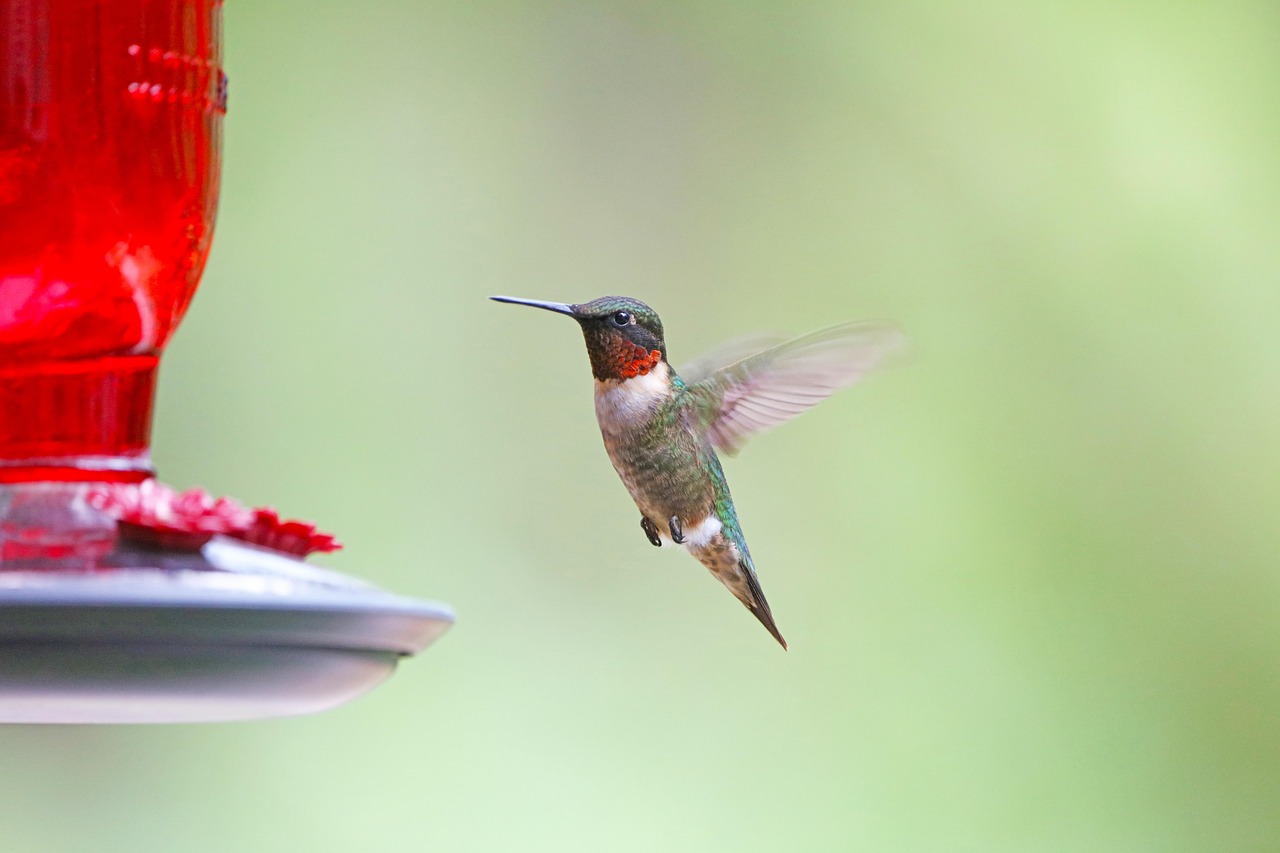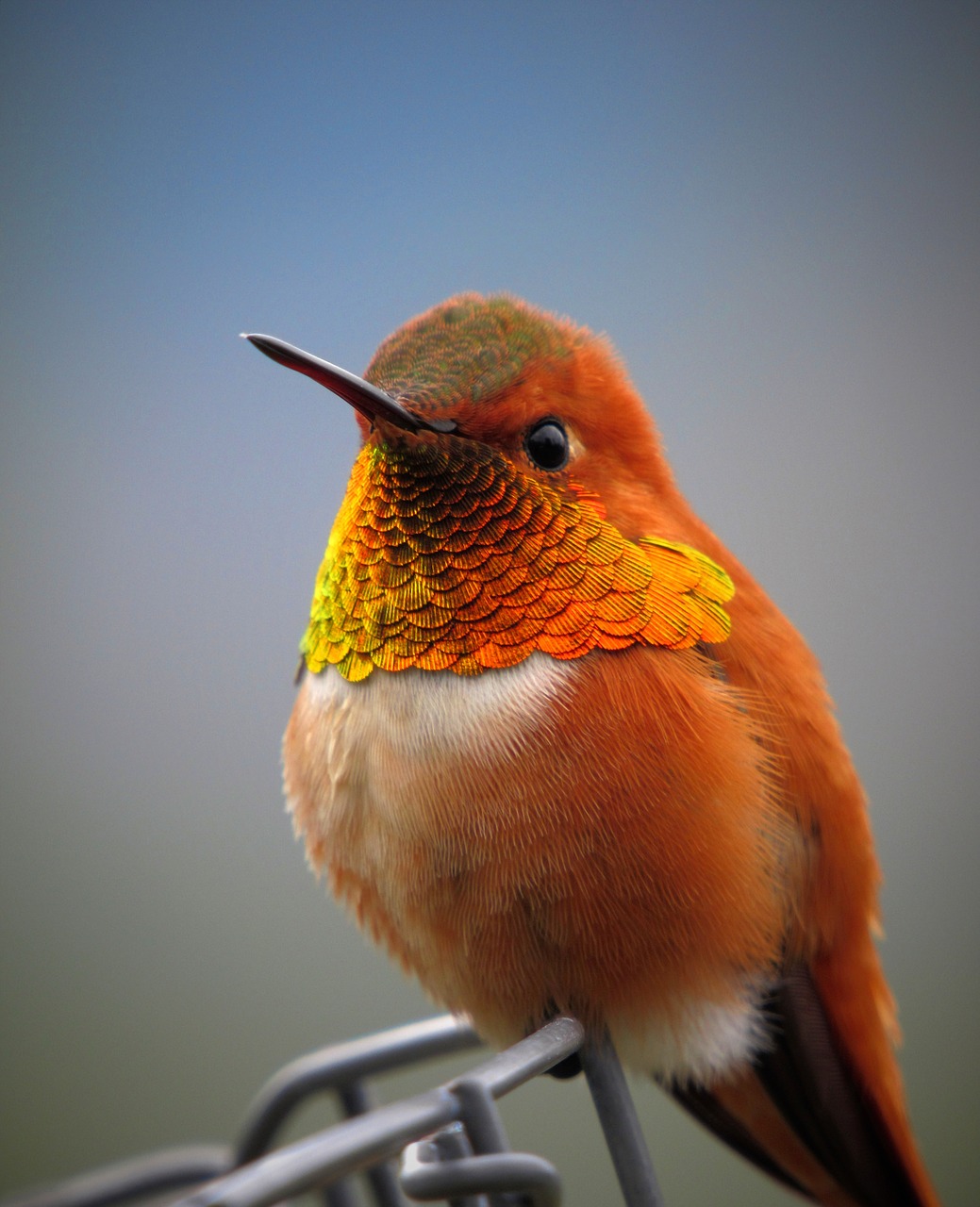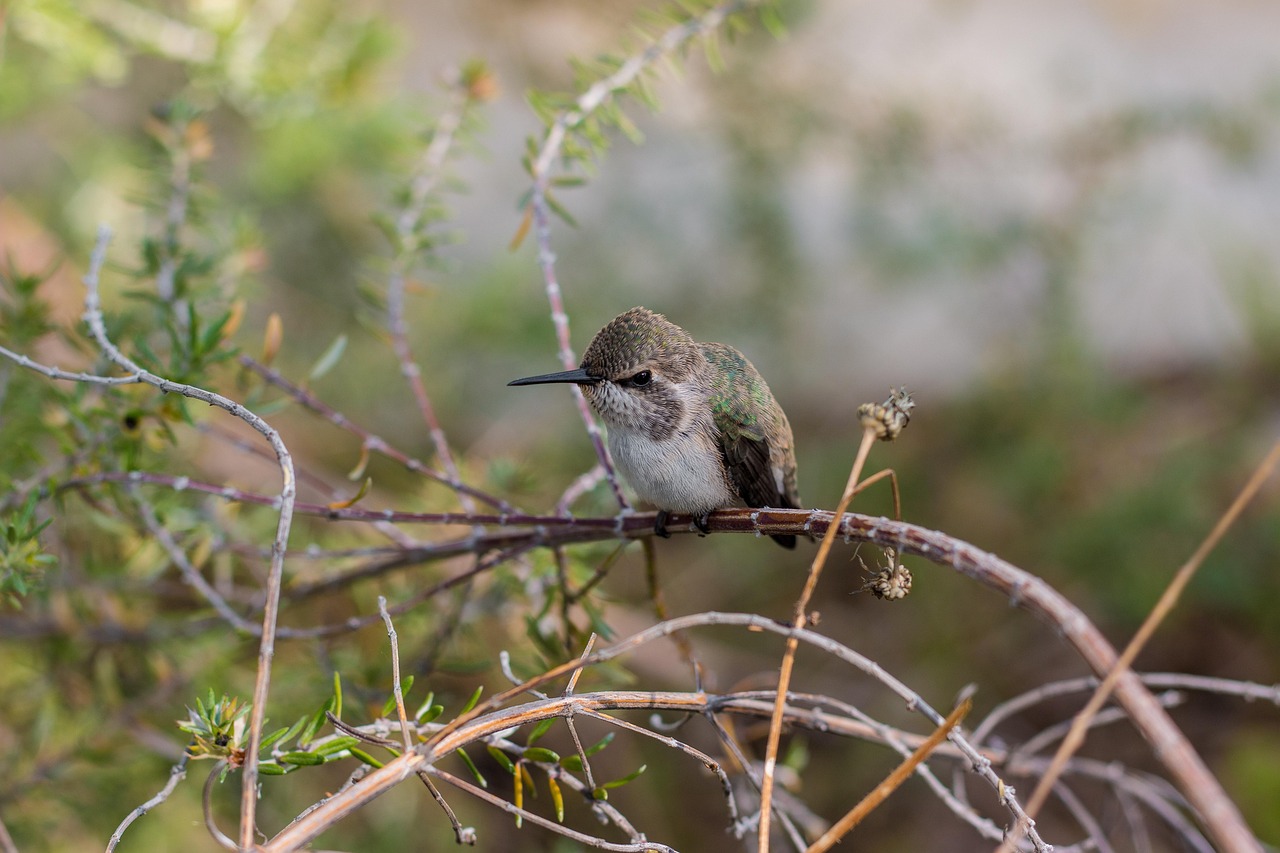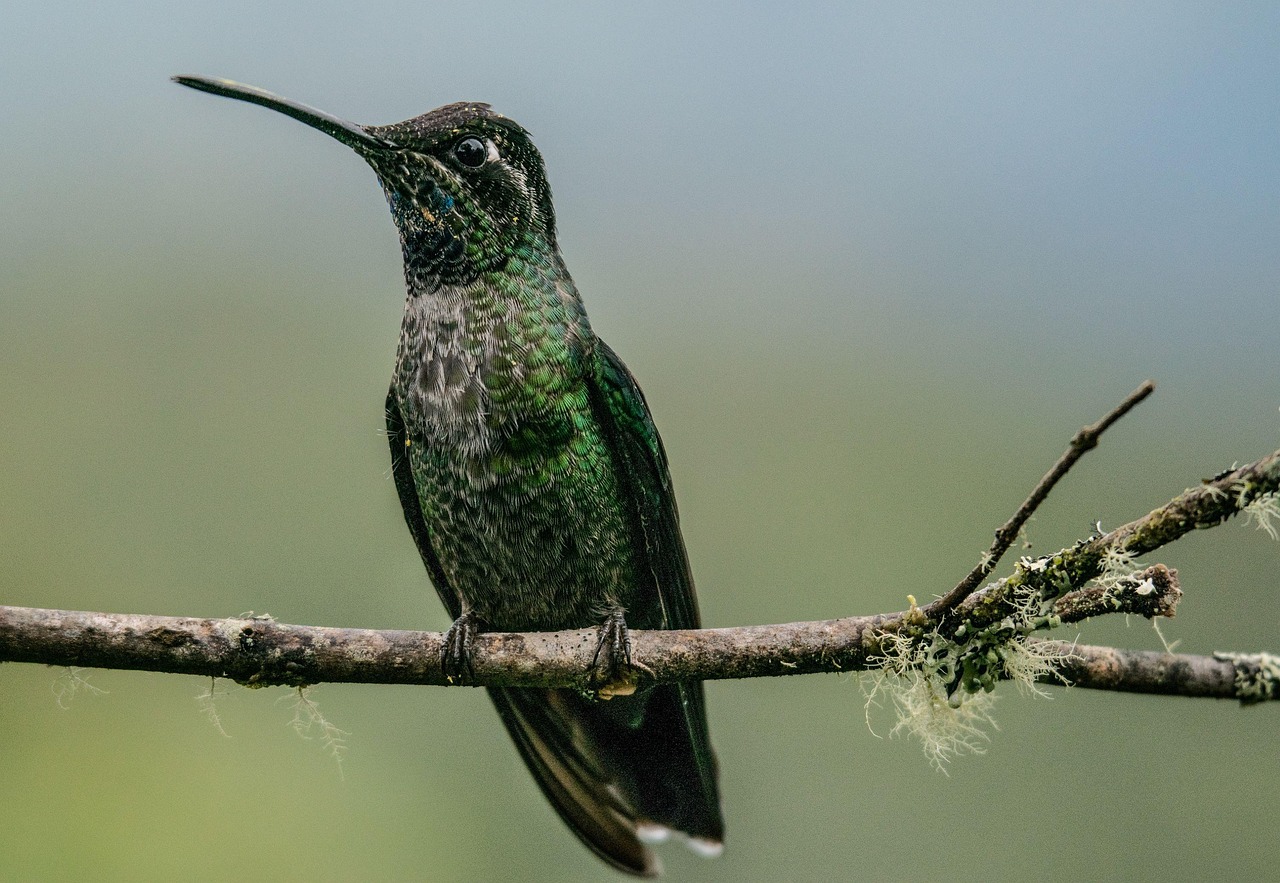The mechanics of hummingbird hovering flight involve rapid wing beats that create lift, allowing these birds to remain suspended in the air. Their unique ball-and-socket shoulder joint enables a full range of motion, resulting in a figure-eight wing pattern that is crucial for maintaining stability and control during hovering.
Understanding Hummingbird Flight

Hummingbirds are fascinating creatures, known for their incredible agility and speed in the air. These tiny birds possess a remarkable ability to hover in place, a skill that is not only impressive but essential for their feeding habits. Unlike many other birds, hummingbirds can fly forwards, backwards, and even upside down. This section delves into the intricate mechanics that enable their unique hovering ability.
To understand how hummingbirds achieve this feat, we first need to explore their anatomy. Their wings are specially adapted for rapid movement. The average hummingbird can beat its wings approximately 50 to 80 times per second, depending on the species. This rapid flapping creates a vortex of air above and below the wings, generating the necessary lift for hovering.
Additionally, the structure of a hummingbird’s wings is different from that of most birds. Their wings are long and narrow, allowing for greater maneuverability. The unique ball-and-socket joint at the shoulder provides an unprecedented range of motion. This flexibility allows the wings to rotate almost 180 degrees, facilitating a distinctive figure-eight motion.
| Aspect | Details |
|---|---|
| Wingbeat Frequency | 50-80 beats per second |
| Wing Structure | Long and narrow wings |
| Shoulder Joint | Ball-and-socket joint |
| Hovering Mechanism | Figure-eight wing motion |
This remarkable wing motion is not just about speed; it also plays a vital role in maintaining stability while hovering. The figure-eight pattern allows hummingbirds to generate lift on both the upstroke and downstroke of their wings. As they flap, they create a unique airflow pattern that keeps them suspended in mid-air, enabling them to access nectar from flowers with precision.
Another critical aspect of hummingbird flight mechanics is their lightweight body structure. These birds possess a high ratio of muscle mass to body weight, which contributes to their powerful flight capabilities. Their heart rates can soar to over 1200 beats per minute during intense activity, supporting their energetic lifestyle.
Moreover, hummingbirds have excellent vision and coordination. Their eyes are capable of seeing a broader spectrum of colors than humans can perceive. This ability helps them locate flowers rich in nectar from a distance. They also have exceptional reflexes, allowing them to change direction quickly while hovering.
In summary, the mechanics of hummingbird hovering flight are a combination of specialized anatomy, rapid wing movement, and advanced sensory capabilities. Understanding these factors provides insight into how these remarkable birds thrive in their environments.
The Role of Muscle Structure in Flight
The muscle structure of hummingbirds is uniquely adapted to support their extraordinary flight abilities. Unlike many other birds, hummingbirds have a high proportion of their total body weight dedicated to flight muscles. These muscles are primarily located in the breast area, which enables powerful wing beats necessary for hovering.
There are two main types of muscles involved in hummingbird flight:
- Fast-twitch muscle fibers: These fibers are responsible for rapid contractions. They enable the hummingbird to achieve the quick wing beats essential for hovering and maneuvering.
- Slow-twitch muscle fibers: While not as prevalent in hummingbirds, these fibers allow for sustained activity over longer periods, which is crucial during migration or long flights.
This combination of muscle fiber types allows hummingbirds to maintain energy-efficient flight while also delivering explosive bursts of speed when needed. The high metabolic rate required for their unique flying style is supported by their specialized muscle composition.
Energy Demands of Hovering Flight
The energy demands of hovering flight in hummingbirds are significant. To sustain their rapid wing beats, these birds require an immense amount of energy. In fact, a hovering hummingbird can use up to 10 times more energy than a resting state. This high energy expenditure necessitates a constant intake of food, primarily nectar, which provides the necessary sugar for fuel.
To meet these energy demands, hummingbirds exhibit specific feeding behaviors:
- Frequent feeding: Hummingbirds feed multiple times throughout the day, visiting hundreds of flowers to gather enough nectar.
- High metabolism: Their metabolic rate is one of the highest known among vertebrates, allowing them to process food rapidly.
- Strategic foraging: They often return to previously visited flowers once nectar levels replenish, maximizing their energy intake.
Additionally, their bodies are designed to efficiently convert nectar into energy. The digestive system is highly adapted to extract sugars quickly, enabling them to resume active flight shortly after feeding.
Flight Mechanics during Feeding
When hummingbirds feed, they must maintain their hovering position while extending their long bills into flowers. This requires precise control and balance. They utilize several techniques to ensure successful feeding:
- Body Positioning: Hummingbirds adjust their body angle to optimize their reach into flowers while maintaining stability.
- Wing Adjustments: They may alter their wingbeat pattern slightly, increasing lift or thrust as needed while hovering.
- Head Stability: Their excellent neck flexibility allows them to keep their heads steady while moving their bodies or wings, which is critical for accurate feeding.
This combination of adaptations allows hummingbirds to feed efficiently while sustaining the energy levels required for their unique lifestyle. Each aspect works in tandem, showcasing the remarkable evolutionary developments that support their hovering capabilities.
Environmental Adaptations and Challenges
The ability to hover is not only a result of physical adaptations but also a response to environmental challenges faced by hummingbirds. These birds inhabit diverse ecosystems, from tropical rainforests to arid deserts. Each environment presents different challenges that have shaped their flight mechanics.
- Wind Resistance: In windy conditions, hummingbirds must exert more energy to maintain a stable hover. Their agility allows them to adjust quickly to changes in wind direction and speed.
- Predator Evasion: Hovering enables them to remain agile and avoid predators. Their quick directional changes help them escape threats effectively.
- Feeding Competition: In areas with abundant flowers, hovering allows them to defend feeding territories against other birds and maximize nectar intake.
These environmental pressures have driven the evolution of their unique hovering flight mechanics, allowing them to thrive in various habitats around the world. Each adaptation plays a crucial role in ensuring they can successfully navigate their surroundings while meeting their nutritional needs.
The Neurological Control of Flight
The remarkable hovering ability of hummingbirds is not only a result of their physical adaptations but also relies heavily on their neurological control. The brain of a hummingbird is highly specialized to manage the complex demands of flight. Understanding this neurological aspect provides insight into how these birds execute their intricate maneuvers.

Hummingbirds possess a relatively large brain compared to their body size, which is indicative of their advanced cognitive abilities. This enlarged brain contains specific regions dedicated to processing sensory information and coordinating motor functions essential for flight.
Brain Structure and Function
The brain of a hummingbird is divided into several regions that play critical roles in flight:
- Cerebellum: This region is crucial for balance and coordination. It processes sensory inputs related to spatial orientation, allowing hummingbirds to maintain stability while hovering.
- Cerebral Cortex: Involved in higher cognitive functions, the cerebral cortex helps hummingbirds navigate and remember locations of food sources.
- Brainstem: This area controls basic functions such as heart rate and respiration, which are vital during high-energy activities like hovering.
The integration of these brain regions allows hummingbirds to react quickly to environmental changes. For instance, when encountering sudden gusts of wind or predators, they can adjust their flight patterns almost instantaneously.
Sensory Systems Supporting Flight

Hummingbirds rely on their highly developed sensory systems to navigate their environment effectively. Their vision, in particular, plays a pivotal role in their flight mechanics.
Visual Acuity
Hummingbirds have exceptional vision that surpasses human capabilities in several ways:
- Color Vision: They can see ultraviolet light, allowing them to detect colors that are invisible to humans. This helps them identify flowers and other food sources more effectively.
- Motion Detection: Their ability to perceive rapid movements aids in avoiding predators and responding quickly to environmental changes.
- Depth Perception: Hummingbirds possess excellent depth perception, which is essential for accurately judging distances while hovering and feeding.
The combination of these visual capabilities allows hummingbirds to perform precise maneuvers while foraging for nectar. They can quickly assess the distance to a flower and adjust their hovering position accordingly.
Other Sensory Inputs
In addition to their advanced vision, hummingbirds utilize other sensory inputs to enhance their flying abilities:
- Vestibular System: This system helps them maintain balance and spatial orientation during flight. It provides information about the position and movement of their bodies in relation to gravity.
- Tactile Feedback: The feathers on their wings and bodies contain sensory receptors that provide feedback on airflow and pressure changes, facilitating better control during hovering.
The integration of these sensory systems enables hummingbirds to execute complex flight patterns with remarkable precision. They can navigate through dense vegetation, hover at precise angles, and evade obstacles effortlessly.
Comparative Anatomy: Hummingbirds vs. Other Birds
To appreciate the unique mechanics of hummingbird hovering flight, it is beneficial to compare their anatomy with that of other bird species. While all birds have adaptations for flight, hummingbirds stand out due to several distinctive features.
| Characteristic | Hummingbirds | Other Birds |
|---|---|---|
| Wing Structure | Long and narrow wings with ball-and-socket joints | Varied wing shapes adapted for gliding or flapping |
| Muscle Composition | High ratio of fast-twitch muscle fibers | Mix of fast-twitch and slow-twitch fibers |
| Metabolic Rate | One of the highest among vertebrates | Generally lower metabolic rates |
This comparison highlights the specialized adaptations that set hummingbirds apart from other birds. Their unique anatomical features enable them to excel in hovering flight, making them one of nature’s
This comparison highlights the specialized adaptations that set hummingbirds apart from other birds. Their unique anatomical features enable them to excel in hovering flight, making them one of nature’s most efficient and versatile flyers. These adaptations allow hummingbirds to engage in behaviors that are critical for their survival, such as foraging and evading predators.
The Importance of Hummingbird Hovering Flight in Ecosystems

The mechanics of hummingbird hovering flight play a significant role not only in their individual survival but also in the health of ecosystems. As pollinators, hummingbirds contribute to the reproduction of various flowering plants, which rely on them to transfer pollen from one bloom to another. This relationship is vital for maintaining biodiversity and ensuring the stability of food webs.
Some key contributions of hummingbirds to ecosystems include:
- Pollination: Hummingbirds visit a wide range of flowering plants, facilitating cross-pollination. This process increases genetic diversity and resilience among plant populations.
- Nectar Production: The presence of hummingbirds can stimulate the production of nectar in flowers, encouraging plants to invest more energy in reproduction.
- Food Source: They serve as a food source for various predators, including larger birds and mammals, thus contributing to the food chain.
The intricate dynamics between hummingbirds and the flowering plants they depend on highlight the interconnectedness of species within an ecosystem. Their ability to hover allows them to efficiently access nectar, benefiting both themselves and the plants they pollinate.
Future Research Directions
Although significant progress has been made in understanding the mechanics of hummingbird hovering flight, many questions remain unanswered. Future research could explore various aspects of hummingbird behavior and physiology, including:
- Flight Mechanics at Different Altitudes: Investigating how varying air densities affect hummingbird flight performance could provide insights into their adaptability.
- Impact of Climate Change: Understanding how changing climate patterns influence hummingbird migration and feeding habits is crucial for conservation efforts.
- Neurological Studies: Further research into their brain function could reveal more about how these birds process sensory information during complex flight maneuvers.
By focusing on these areas, researchers can enhance our understanding of hummingbirds and their role within ecosystems. This knowledge is essential for developing effective conservation strategies to protect these remarkable birds from habitat loss and environmental changes.
Final Thoughts
The mechanics of hummingbird hovering flight represent a pinnacle of evolutionary adaptation. Their specialized anatomy, powerful muscle structure, and advanced neurological control enable them to perform extraordinary feats in the air. As vital pollinators, hummingbirds contribute significantly to ecosystem health and biodiversity.
From their unique wing movements to their impressive energy management, hummingbirds showcase the remarkable intersection of biology and ecology. Their ability to hover is not just a fascinating spectacle; it is a critical survival strategy that influences their interactions with the environment. Understanding these mechanics not only enriches our appreciation of these incredible birds but also underscores the importance of preserving their habitats for future generations.
In conclusion, the study of hummingbird flight mechanics offers a window into the complexities of adaptation and survival in nature. These small yet powerful birds continue to inspire curiosity and admiration, reminding us of the wonders of biological engineering in the animal kingdom.
